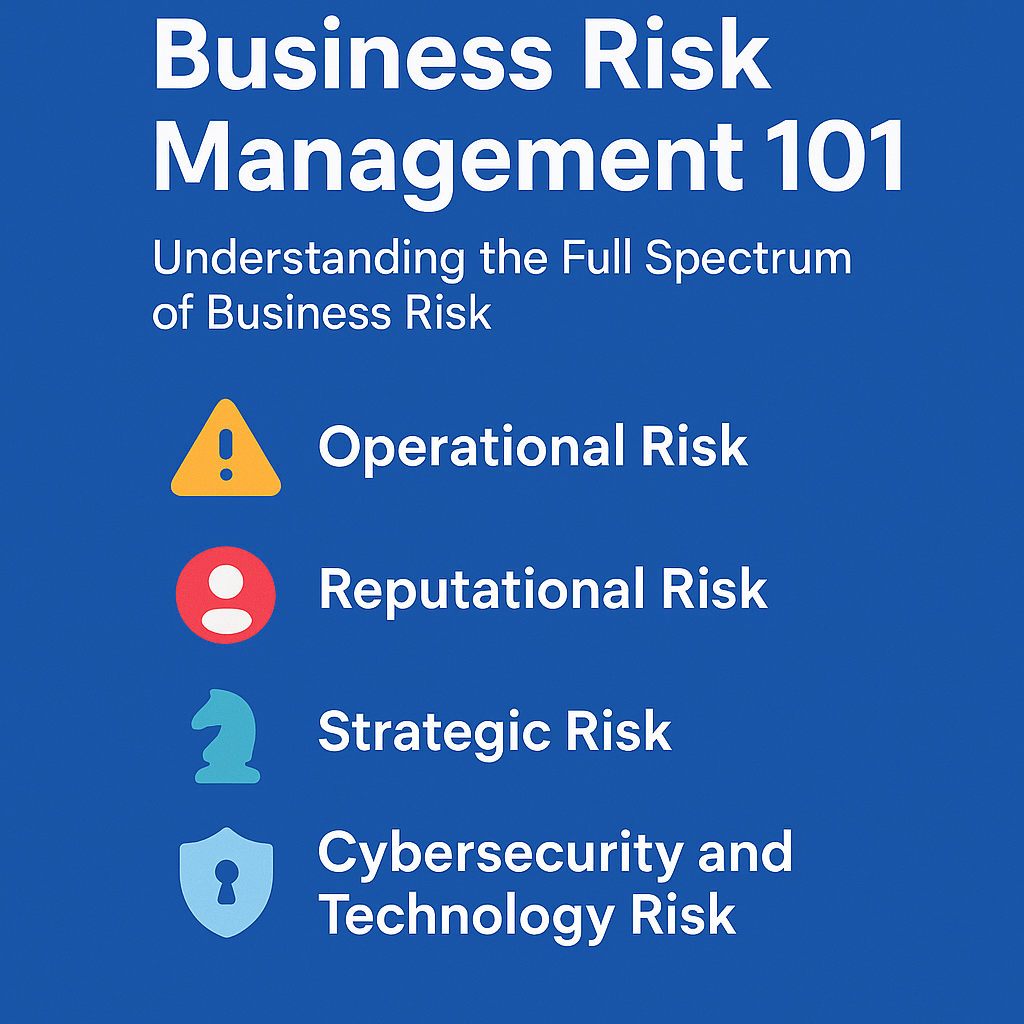Business Risk Management 101: Understanding the Full Spectrum of Business Risk
Every business carries risk. From lawsuits to cyber attacks, the list is long and growing. But Business Risk goes far beyond just legal and financial pitfalls. Whether you’re running a startup or leading a Fortune 500 company, understanding how to manage risk is crucial to long-term success. Let’s break down what real-world business risk management looks like today — beyond the legal and financial checklists.
If you missed our foundational guide on legal and financial risk management, make sure to check that out too.

What Is Business Risk?
Business risk is the potential for any internal or external factor to disrupt your operations, revenue, or reputation. It includes risks that arise from decision-making, people, technology, supply chains, and even the environment. Managing risk isn’t about avoiding it completely — it’s about preparing for it and responding strategically.
Types of Business Risk Beyond Legal and Financial
1. Operational Risks
These are the risks you face in your day-to-day business activities. Think about system failures, outdated processes, poor quality control, or human error. For example, a manufacturing plant’s outdated machinery can slow down production and impact profits. Managing operational risk involves streamlining processes and investing in the right infrastructure.
2. Strategic Risks
Strategic risk occurs when a company makes poor business decisions, misreads the market, or fails to adapt. Remember Blockbuster? They ignored the shift to digital streaming. Netflix didn’t. Strategic risk management means staying informed, agile, and open to innovation.
3. Reputational Risks
Your brand is one of your most valuable assets. A single social media crisis, data breach, or ethical scandal can damage years of goodwill. Reputational risk management includes crisis communication planning, transparent policies, and proactive customer service.
4. Environmental and Climate Risks
From extreme weather events to shifting regulations around emissions, climate-related business risk is real. Businesses must consider sustainability in their operations and supply chains. The UNEP FI report outlines how climate risk is reshaping global finance and operations.
5. Technological and Cybersecurity Risks
As technology evolves, so do the threats. A ransomware attack can paralyze your business in minutes. Managing cybersecurity risk means investing in tech resilience, updating systems regularly, and training staff on safe practices. Check out the Cybersecurity & Infrastructure Security Agency (CISA) for resources.
How to Build a Comprehensive Business Risk Management Plan
- Risk Identification: List all possible internal and external threats to your business.
- Risk Analysis: Evaluate how likely each risk is, and what impact it could have.
- Prioritization: Focus on high-impact, high-likelihood risks first.
- Response Strategy: Decide whether to avoid, mitigate, transfer (e.g., insurance), or accept the risk.
- Monitoring: Reassess regularly. Risks evolve as your business grows.
Final Thoughts
Business risk isn’t something you can eliminate, but it is something you can control. The more diverse your approach to Business Risk Management, the stronger and more resilient your organization becomes. Don’t just protect your business from lawsuits and taxes — protect it from stagnation, disruption, and irrelevance.
Want to dive deeper? Explore the ISO 31000 guidelines on risk management — a global standard for building resilient businesses.
Need help assessing your company’s risk exposure? Contact our team for a custom consultation.





